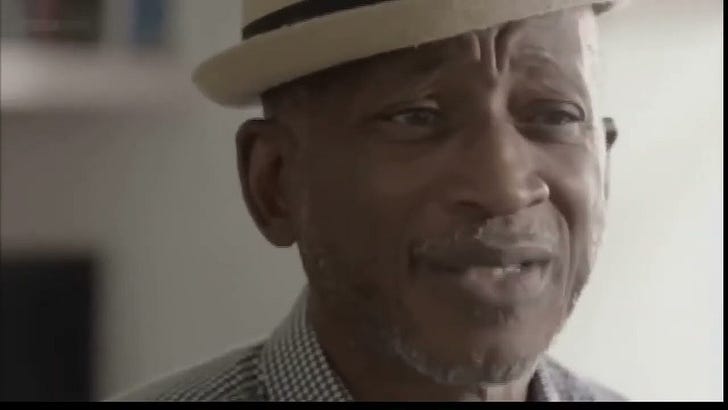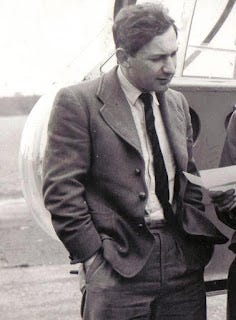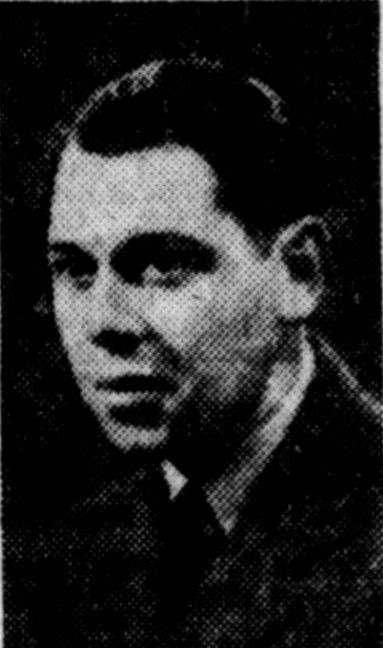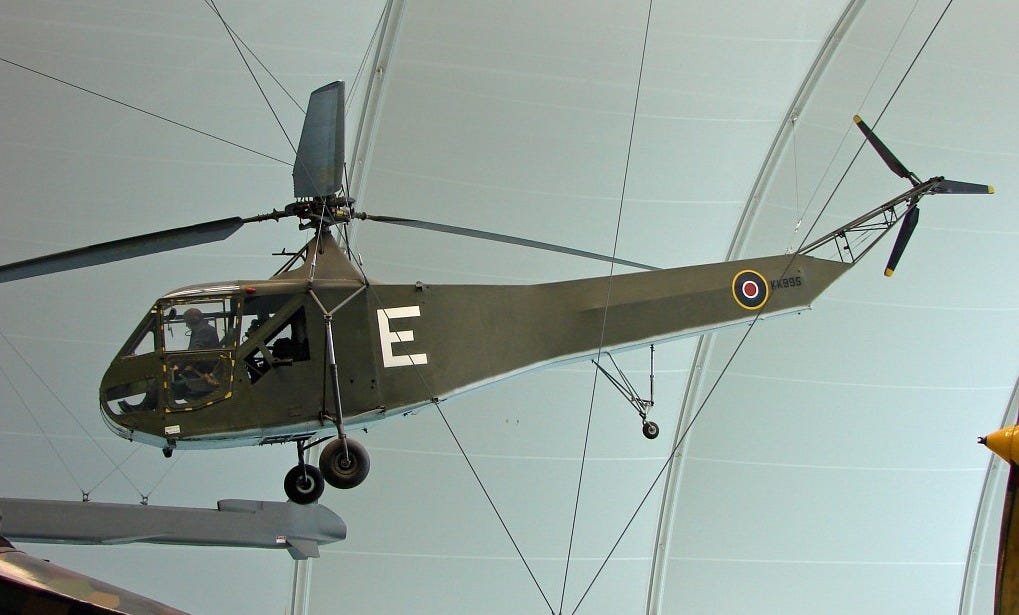During WW2, Basil Arkell served in Coastal Command and later on No 529 Rota Squadron before taking command of the Training School.
In the latter part of the war, nine Sikorsky R-4s, including the flight from the Hanworth (London) Aero Park were formed into the RAF Helicopter Training School at Andover. The object of the school was to train Army AOP pilots using the Sikorsky R-4, known in RAF service as the Hoverfly 1.
Before the AOP pilots could be trained on the helicopter, the school needed instructors. Consequently, twelve autogiro pilots from No 529 Squadron converted onto the Hoverfly. One hoverfly was also taken on strength by 529 Sqn for radar calibration trials.
Sqn Ldr John ‘Jeep’ Cable along with some of the RAF pilots took the first two Hoverfly’s to the Airborne Forces Experimental Establishment at Sherburn in Elmet and later to the Experimental Rotary Wing Flight at Beaulieu.
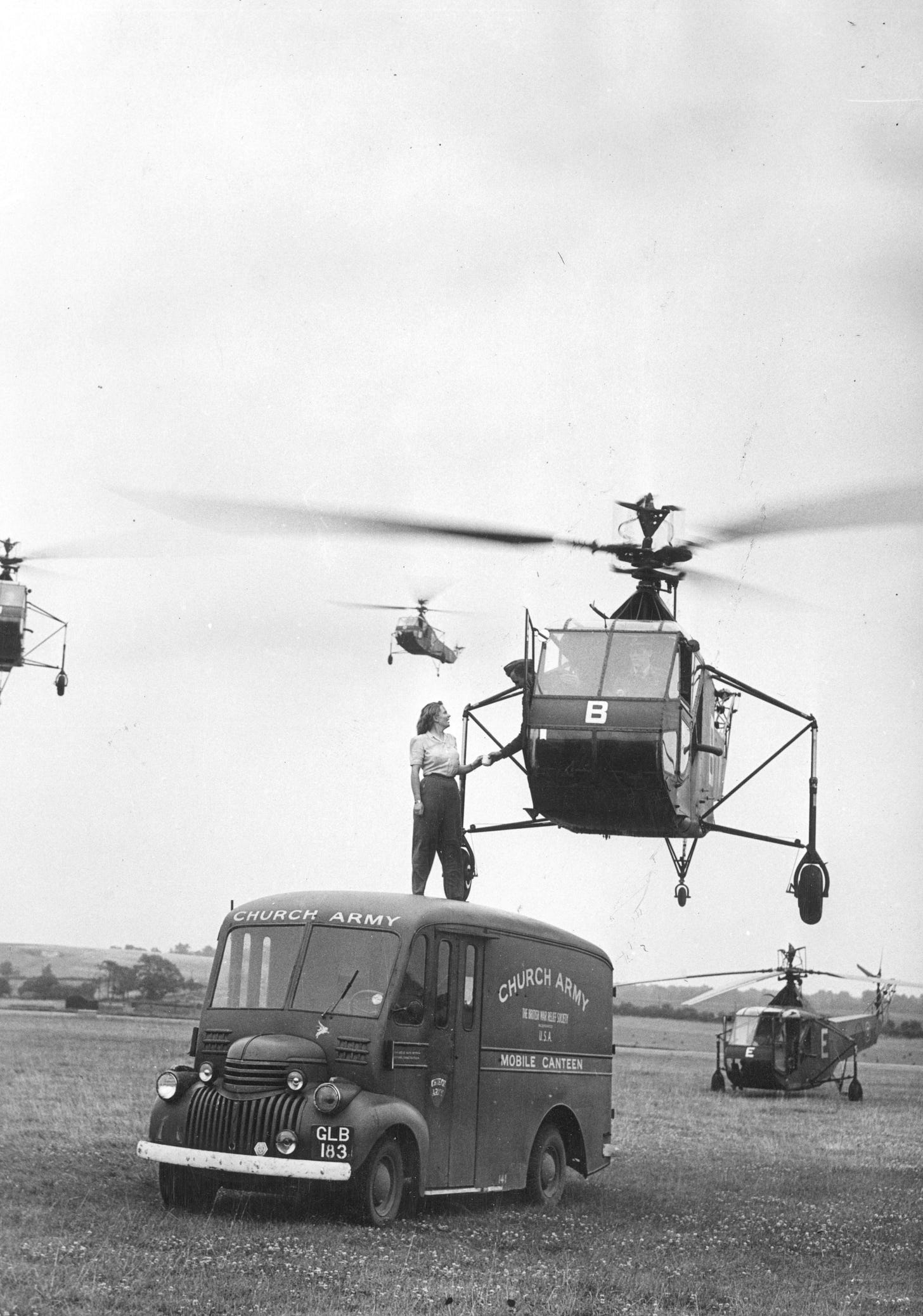
The students underwent a 30 hour conversion course over a period of 5 weeks with the firs RAF course being held in April 1945.
Located at RAF Andover was a helicopter maintenance school which also provided instructional courses for helicopter ground crews.
One of the Sergeant fitters based at the school was Sgt F J Wilson who had been in the RAF since 1940. He had a vast experience of many types of fixed wing aircraft operated by both the RAF and Fleet Air Arm. Following his initial training at Hednesford, he was attached to the FAA at Gosport working on Fairy Swordfish aircraft.
In May 1941, Wilson was posted to India and worked on Wellington bombers. After India, he next went to Iraq in Persia where improvisation was the name of the game. One example was when he was based on Masirah Island in the Persian Gulf, they had to build all their billets and other camp buildings out of petrol tins filled with sand.
In additions to Swordfish and Wellingtons, he also worked on Blenheims, Hurricanes and Tempest before being posted onto helicopters.
As a helicopter fitter, Sgt Wilson flew several times with the CO, Sqn Ldr Arkell in the two seater Hoverfly. Describing the experience of flying in a helicopter, he said “It is like going up in a very fast lift. You can pull up and actually stop in the air, and then go backwards, or go vertically up and down, all of which makes it feel different to any other kind of flying.”
He went on to say “as helicopters could be flown comfortably over the ground at a height of only 10 feet and a speed of 90-100m.p.h., one had a sensation of flying much faster.”
Other individuals that flew with Sqn Ldr Arkell were Bob Hope and Jerry Colonna.
Sgt H F Smith was another of the original fitters on the helicopter school. He originally joined the RAF in 1938 as an aircraft apprentice at RAF Halton. In 1940, he went to the RAF School at Queenstown in South Africa where he served for two years before transferring to RAF Bathurst in the Gambia, servicing Sunderland flying boats.
In 1943, he returned to the UK going to the Air Ministry before being sent to the USA in 1944 to undertake a helicopter course. After completing the course, he remained at Floyd Bennett Field at Long Island, New York where he serviced helicopters until the end of 1944 when he was posted to RAF Andover to join the Helicopter Training School.


